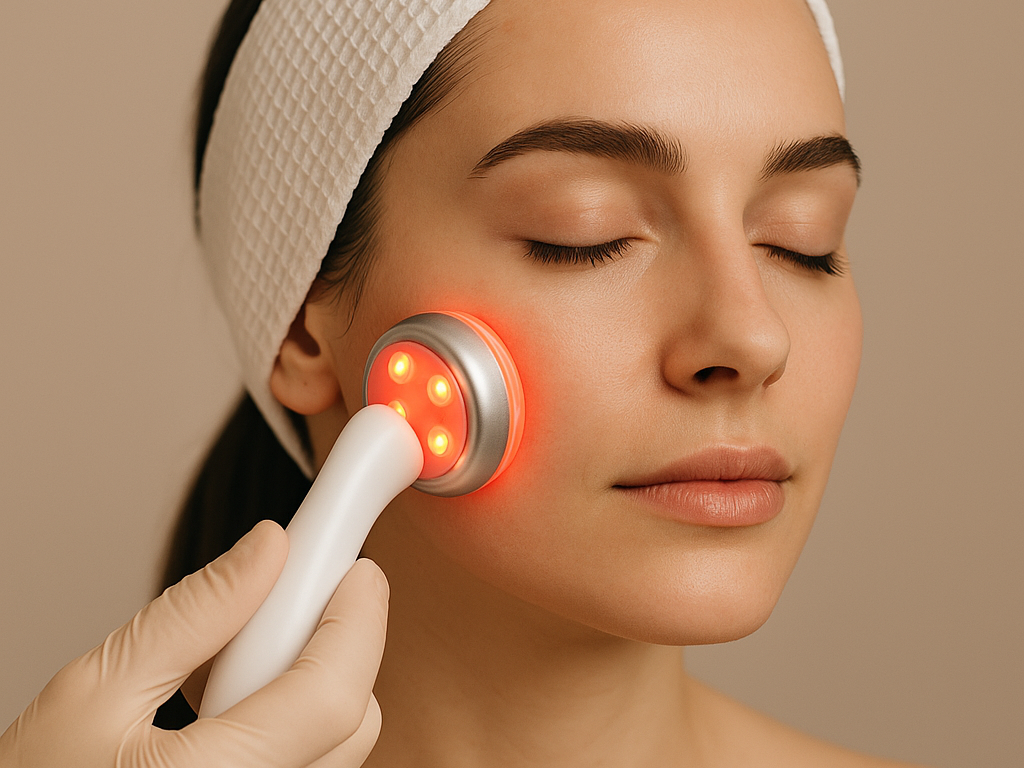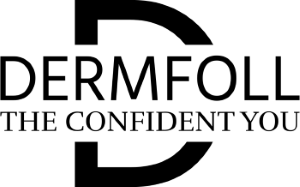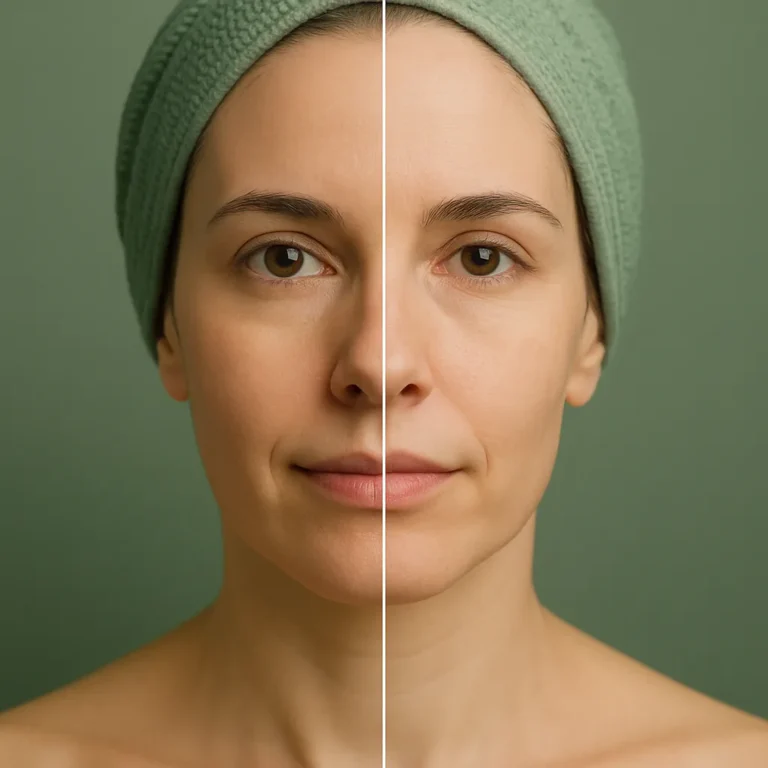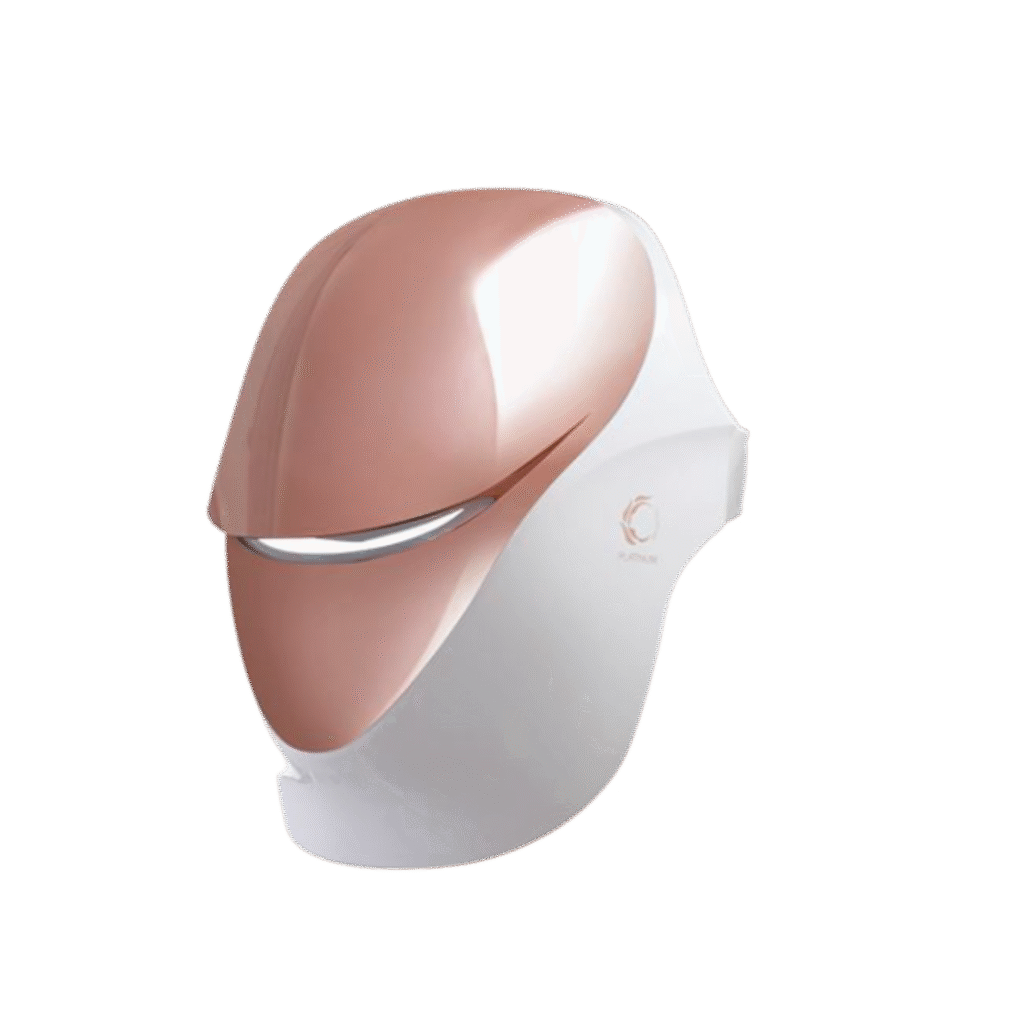Are RF Facial Tightening Tools: No-Go for Thin Faces? let’s discuss it.
From the luxury of your bathroom, you have therefore most likely seen all those elegant radio frequency face equipment promising to lift, tighten, and give you that young glow.
Sounds perfect, really? But if you have a slimmer face or have lately dropped weight, you could be wondering: Is this safe for me?
Let’s dissect that one layer at a time.
Your Facial Fat Pads Do More Than You Think
Imagine your face like a cushion, The fluff within that gives your face contour and softness. That is your pad of face fat.
You’ve got both superficial and deep layers, and they sit over muscles and under the skin, helping your face look fresh and smooth.
Whether your face is naturally thin or you’ve just lost weight, these fat pads are already on the lighter side.
If you use heat-based equipment like an rf machine face treatment, it simply means less “cushion” between your skin and bone and less margin for error.
That’s not a terrible thing at all.
The problem? RF (radio frequency) heats tissue to induce collagen — which is excellent — but it can also reach and damage fat.
And when fat is already minimal? You could end up losing volume you really want to keep.
🔶 Non-Thermal Collagen & Elastin Boost—Zero Fat Impact
• CHOUOHC LED Photon Mask – 620 nm red and 850 nm near-IR light gently energize fibroblasts for collagen/elastin synthesis without heating fat pads
• CELLRETURN PLATINUM LED Mask – Multi-spectrum LEDs penetrate to dermal layers, triggering remodeling pathways while completely sparing adipose tissue
A Few Key Questions Before You Plug in That Device
Before utilizing any form of facial tightening equipment, especially if it employs radio frequency, it’s worth asking yourself:
Has my face always been thin or hollow?
Have I recently dropped a large amount of weight?
Am I detecting more cheekbone definition or less plumpness lately?
If you’re nodding “yes” to any of those, it might be a hint that you’re particularly sensitive to fat volume fluctuations — and that a radio frequency face device might not be the safest bet without some direction.
So, What Can You Use Instead?
Here’s the good news: you’ve got options. If your only goal is a little lift, firmness, or that “I-slept-well” look, there are various facial tightening methods that don’t rely on heat.
Microcurrent devices: These give your facial muscles a gentle exercise. Think of it like yoga for your face.
Peptide-rich serums: These support collagen from the outside-in.
HIFEM (High-Intensity Focused Electromagnetic) tech: Less common at home, yet mild on fat and ideal for tone.
These treatments tend to tighten without reducing fat, which is excellent when volume is something you want to preserve – not lose.
Bottom line? If your face is naturally slender or you’ve lost volume lately, it’s okay to be careful.
Not every radio frequency face gadget is inappropriate for you, but the safest strategy is to start cautiously, or better yet, chat to someone who knows your skin.

Post Radio Frequency Face Device Treatment Puffiness or Real Fat Loss? Let’s Sort It Out Together
Okay, so you’ve done your at-home session with your radio frequency face equipment. Your skin feels heated, maybe even a little tighter — wonderful!
But a few days later, you catch yourself in the mirror and think weather the your face looks hollower than usual.
That tiny voice in your head starts wondering: is this just post-treatment swelling going down, or did I genuinely shed facial fat?
Swelling vs. Fat Loss: How to Tell the Difference
After utilizing an rf machine face gadget (or even an in-office treatment), it’s entirely common to have a little transient puffiness.
That’s your body’s way of reacting to the heat – we call it post-treatment edema — and it normally fades within 24 to 72 hours.
Think of it like your skin getting a tiny workout. It could look a touch “plumped” shortly after, but it’s transitory.
The challenge? When the swelling goes down, your face could seem thinner — and you might mistake that for fat reduction.
Now, actual fat atrophy? That takes longer to show. If you start seeing hollowing or volume loss over a few weeks.
Especially in places like the cheeks or temples, that’s when we need to pause and reassess the settings or frequency of your face tightening equipment.
Simple Ways to Keep Track (So You Don’t Have to Guess)
Don’t worry – you don’t need a lab coat or costly equipment to figure this out. There are a few basic techniques you may use at home to monitor your face over time:
- Take weekly photos: Same lighting, same viewpoint, same expression. This gives you a visual log of any changes – good or not-so-great.
- Try the pinch test: Gently squeeze places like your cheek or jawline. Over time, if that squeeze feels considerably smaller or flatter, it could signal volume loss.
- Ultrasound (if you’re truly curious): If things still feel strange and you want clarity, some dermatologists can utilize ultrasonography to evaluate your facial fat layer. It’s not something everyone needs — but it’s out there if needed.
Using these strategies helps you keep in tune with your face, especially if you’re playing with a radio frequency face device at home.
And remember: just because something is branded “non-invasive” doesn’t mean it’s risk-free – especially when it comes to long-term face volume.
So, if your skin feels deflated days after RF, don’t panic – it can just be the puffiness fading off. But if you detect a consistent hollowing out over time, it’s worth stepping back and reassessing.
Your face deserves both lift and volume.
🔶 Ideal Alternative to RF for Volume-Sensitive Faces
• CHOUOHC LED Photon Mask – Delivers uniform photonic energy, tightening skin and improving tone without thermal stress or risk of fat atrophy
• CELLRETURN PLATINUM LED Mask – Adaptive sensor calibration ensures low-heat operation focused on dermal matrix, preserving facial contours

How to Rebuild Lost Volume After RF: Let’s Talk Real Solutions
So maybe you’re here because you’ve observed some volume loss — your cheeks don’t feel quite as plush, or that the fullness has vanished after utilizing a radio frequency face device a bit too often.
First of all, don’t beat yourself up. These things happen, and the good news is: there are methods to bounce back.
Let’s go through some evidence-backed options to repair what might’ve been lost — and help your face feel like you again.
Injectables That Do More Than Fill: Sculptra® & Radiesse®
When most people think of injectables, they image plumping up cheeks instantaneously — like pushing “undo” with a needle.
But biostimulatory fillers like Sculptra® and Radiesse® go a step farther.
- Sculptra is made from poly-L-lactic acid and works like a slow builder – it stimulates your body to produce more collagen over time. Results take a few months, but they’re very natural.
- Radiesse is calcium-based and gives both rapid volume and long-term skin regeneration. It encourages your skin to rebuild its own supporting foundation.
What makes them so special? They don’t just “fill”—they retrain your skin to restore its own structure.
If you’ve overdone it with a facial tightening technique, these are frequently the go-to to restore equilibrium without seeming overfilled.
Topical + Light Therapy: Small Moves, Big Support
Let’s assume you’re not ready for needles – absolutely reasonable. There are also topical and device-assisted methods that can gently support your skin from the outside in.
- Growth factor peptides in serums or creams can help boost collagen and elastin. Look for ones that mention human fibroblast conditioned medium or advanced peptide complexes.
- Red-light therapy (like those slim LED masks or wands) works on a cellular level to reduce inflammation, boost healing, and even help with collagen formation.
These instruments won’t restore lost fat overnight, but applied consistently, they can help strengthen and rejuvenate your skin – especially if you’re dialing down on the rf machine face treatments for a bit.
To sum it up: Yes, volume may come back — and you don’t necessarily require severe measures.
Whether you opt for biostimulatory injectables, nanofat PRF, or just amp up your skin regeneration game with peptides and light treatment, there are safe, sensible paths forward.
🔶 Complement & Recover Post-RF—Lock In Plumpness
• CHOUOHC LED Photon Mask – Calms heat-induced inflammation post-RF, reinforces barrier function, and sustains fibroblast activity for long-term firmness
• CELLRETURN PLATINUM LED Mask – Enhances microcirculation and lymphatic flow to reduce edema, support tissue repair, and maintain subcutaneous fullness
CONCLUSION
So, we’ve covered a lot — and if you’re feeling a little more informed (or a little more cautious) about your favorite facial tightening tools, that’s a good thing.
We’ve talked about how a radio frequency face device can be powerful, yes, but also a little too intense for thinner faces when not used carefully.
And we broke down how to spot early signs of fat loss, how to track changes, and most importantly, what to do if your rf machine face session left more than just a glow behind.
Remember, this isn’t about fear — it’s about being smart. Your face isn’t just skin — it’s structure, balance, and expression. And choosing the right facial tightening tool shouldn’t compromise any of that.
Our next blog post – Your Post-Treatment RF Treatment Schedule: How Often Should You Really Do It?












